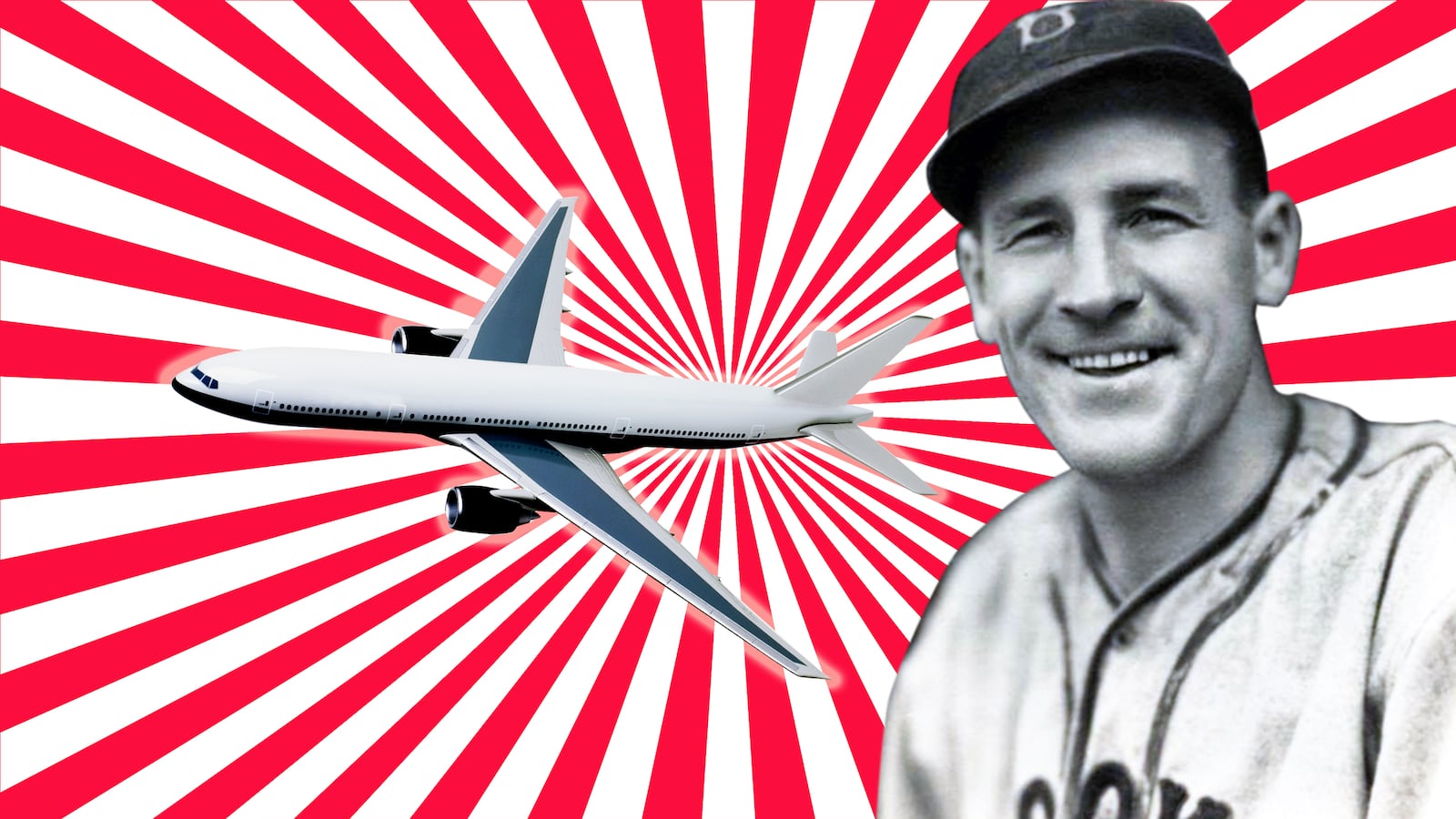The first person to attempt to hijack a domestic commercial airplane in the United States was a Brooklyn Dodger.
Commercial air travel was not a common way to get around in 1935. Most baseball teams, like most people, still took trains for long distance travel. Attempts to hijack a plane were rare.
And yet, Len Koenecke has the dubious distinction of being the first person to attempt to hijack an airplane inside the United States, in 1935. He also played baseball for the Brooklyn Dodgers, and that was the cause of his crime.
Koenecke would have fared better had he stayed in his hometown of Baraboo, Wisconsin instead of venturing to New York City to seek his fortune. He had family and country traditions in Wisconsin and a good job as a railroad fireman for the Chicago & Northwestern Railroad.
But Koenecke had the baseball bug. He was 5'11, 180 pounds, and had good speed and power. He stood out among the young baseball players in Wisconsin for his raw talent. That talent aside, he always seemed off to those around him. Fellow railroad workers and minor league players alike frowned on his copious drinking habits and belligerent rants after a few pops. Major league scouts thought he had the tools to make it as a pro but they did warn that Koenecke was “an eccentric.”
Koenecke persisted. He knew he could play major league baseball. He had a great season in 1931 with the Indianapolis Indians. Koenecke showed such promise that the normally penurious New York Giants bought Koenecke from Indianapolis for $75,000 in 1932. Giants manager John McGraw was excited by his new prospect and went on the record predicting that Koenecke would become one of the top outfielders in the National League. He played decently for the Giants that year but not up to McGraw’s standards and was demoted in mid-season to the club’s minor league team, the Buffalo Bisons.
For two seasons Koenecke flourished there. Bisons fans loved their new slugger, and the team had a Len Koenecke jigsaw puzzle giveaway late in the season. His fellow Buffalo players got a good laugh out of that because Koenecke was a puzzle none of them could figure out. One day he was a pleasant man and then next a storming brute.
Still, Koenecke did well enough there that Brooklyn Dodgers manager Casey Stengel had him brought up to that club ers in 1934. Koenecke was thrilled to be back in the big leagues and moved into 2075 Regent Place in Brooklyn with his wife Gladys and his three-year-old daughter Anna.
Brooklyn agreed with Koenecke and in 1934, he hit .320 and led the Dodgers with 14 home runs. He played solid outfield and made only two errors, leading the league. The Dodgers finished in sixth place at 71-81. The one bright spot was that Stengel thought he had a rising star with Len Koenecke.
The Dodgers had been a major league club since 1884. They had numerous names before 1913: The Grooms, The Grays, The Superbas and The Robins. The Robins seemed to be the most popular because even until the 1950’s newspapers would still refer to them as The Flock. But the official name was the Brooklyn Dodgers, short for The Brooklyn Trolley Dodgers. Trolley Dodgers was what Brooklyn pedestrians were called as they always had to dodge the trolleys that ran all over the borough’s streets.
By 1935 Brooklyn was also known as “Dem Bums” because they were considered a losing team. But as bad as they played Brooklyn loved them. The 1935 season started with great hopes helmed by their new star, Koenecke. Those hopes died quickly as their new star also began to fade. As the season wore on, Stengel blamed the decline in Koenecke’s hitting and pitching on his drinking. He benched Koenecke and replaced him with Frenchy Bordagaray, a-light hitting scrub.
As the season wore down Stengel verbally abused Koenecke as he rode the bench and fell into a dark mood. On Sept 15, 1935 in Chicago, Stengel put Koenecke in as a pinch hitter in the ninth inning and all poor Len could do was hit into a ground out. The next day, Stengel released him.
When he got the news of his release, Koenecke stormed out of his hotel and promptly bought a bottle of whiskey and boarded an American Airlines flight from Chicago to Detroit. He drank his baseball blues away and after he got good and drunk he was grabbing the stewardess and insulting the other passengers. It got so bad that the pilot had to leave the cockpit and hold Koenecke down as they shackled the drunken now-former Dodger to his seat. He fell asleep chained like a wild animal.
This being a much more innocent time, when the plane landed in Detroit, Koenecke was carried off the plane unconscious and put in the terminal to sleep it off. Koenecke eventually woke up and paid for a flight to Toronto in the hopes of getting back to Buffalo to finish up the season for the Bisons and try and put back the puzzle of his life.
The Toronto flight was piloted by William Mulqueeney and his co-pilot Irwin Davis. Koenecke was the only passenger. As the plane flew 2,000 feet over Toronto Koenecke broke out another bottle of whiskey. Mulqueeney told The New York Times, “Koenecke became restless and started grabbing at the controls.”
The pilot alleged that Koenecke wanted to take over the plane to get it to go directly to Buffalo. Mulqueeney and Davis tried to push the suspended Dodger out of the cockpit but he was too strong. The plane was lurching in the sky and Mulqueeney knew they were in danger of crashing.
Mulqueeney’s statement to the police was, “I had come to a decision. It was either a case of the three of us crashing or doing something to Koenecke… I… grabbed the fire extinguisher and walloped him on the head.”
The fire extinguisher was one thing Koenecke couldn’t dodge. He fell back into the aisle and was knocked out. Mulqueeney took back control of the plane and had to crash land on a Toronto racing track. The two men went back to check on Koenecke and found him dead.
The police were called and Koenecke was taken away by the coroner and Davis and Mulqueeney were questioned by the police. The two men never went to trial and the coroner’s report stated that Koenecke died from blunt trauma to the head. It seems that Mulqueeney hit him more than once with that fire extinguisher.
Koenecke’s body was taken home to Wisconsin and on September 21, 1935 six of his cousins carried his casket to his grave. The Dodger players who attended wore black ribbons on their uniforms to honor their fallen comrade. They also once again finished in sixth place.
Casey Stengel was so guilt ridden over the death of Len Koenecke that the Dodgers hired a local hack writer to make a public statement for him. The team’s players never forgave Stengel, and he was fired the next year.






